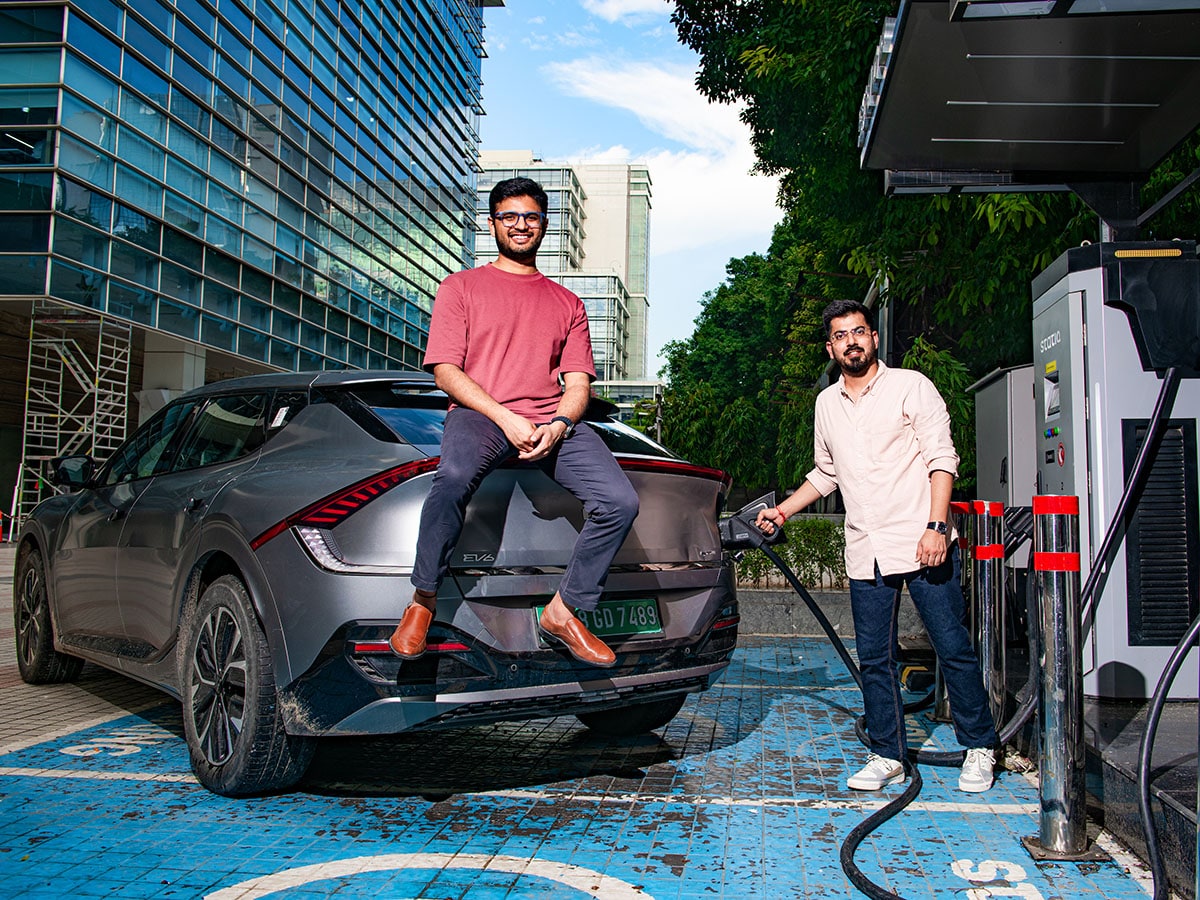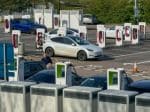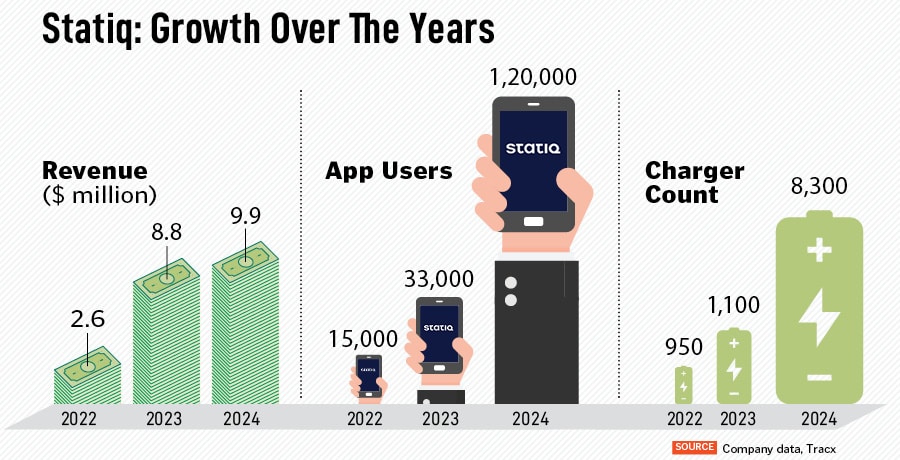How Statiq is building charging infrastructure for India's EV growth
Two friends capitalised on the growing demand for electric vehicles in India by providing scalable hardware and software solutions for the much-needed charging infrastructure
 (L to R) Akshit Bansal and Raghav Arora, Co-Founders at Statiq. Photographed at one of Statiq's EV charging stations in Cyber Cuty, Gurugram.
Image: Amit Verma
(L to R) Akshit Bansal and Raghav Arora, Co-Founders at Statiq. Photographed at one of Statiq's EV charging stations in Cyber Cuty, Gurugram.
Image: Amit Verma
Founded in 2019, Statiq has emerged as the second biggest company in India's electric vehicle (EV) charging market. With over 8000 electric chargers' network on its App, it has 22 percent of the market share in the EV charging space.
India has over four million electric vehicles on its roads. Annual EV sales in FY24 crossed 1.7 million units, with a 40.31 percent year-on-year (y-o-y) growth. India's annual EV sales are expected to reach 10 million by 2030. Statiq is preparing to lead the charging industry as India's EV market expands.
The Gurugram-based startup was co-founded by two friends, Akshit Bansal (who is also the CEO), and Raghav Arora (who is also the CTO). Before Statiq, the duo had co-founded another startup called Sharify, which worked as a vehicle-renting platform for individual owners. From 2018 to 2019, they worked on scaling Sharify without raising capital. However, the biggest challenge in scaling it up was not money, but regulations. In India, you cannot rent personal vehicles. They need to be registered as commercial vehicles for leasing purposes.
Before starting their entrepreneurial journey, Bansal was in a risk advisory role in Deloitte, while Arora was a data scientist at Wipro. Bansal says that the two of them had no experience in running a business, building a team and product. “When we left our jobs and started working, the expectation we had was not to succeed at one time. We thought that it might happen, it might not happen, and maybe it will take a very long time. That’s why it didn’t feel or hurt a lot, and we continued,” he says.
By the time Sharify shut down, the co-founders were prepared for their next venture. Arora mentions how small things like setting up their first Amazon Web Services (AWS) account, building a website and user interface, and search engine optimisation (SEO) skills came in handy while building Statiq. “We did not have to re-engineer the process of making something. Of course, we had to make something from scratch, but we knew how to set this up and choose the right programming languages because we were already using niche programming languages. That helped, in addition to all the scaling, growth, and customer acquisition that we learned,” he says.



















